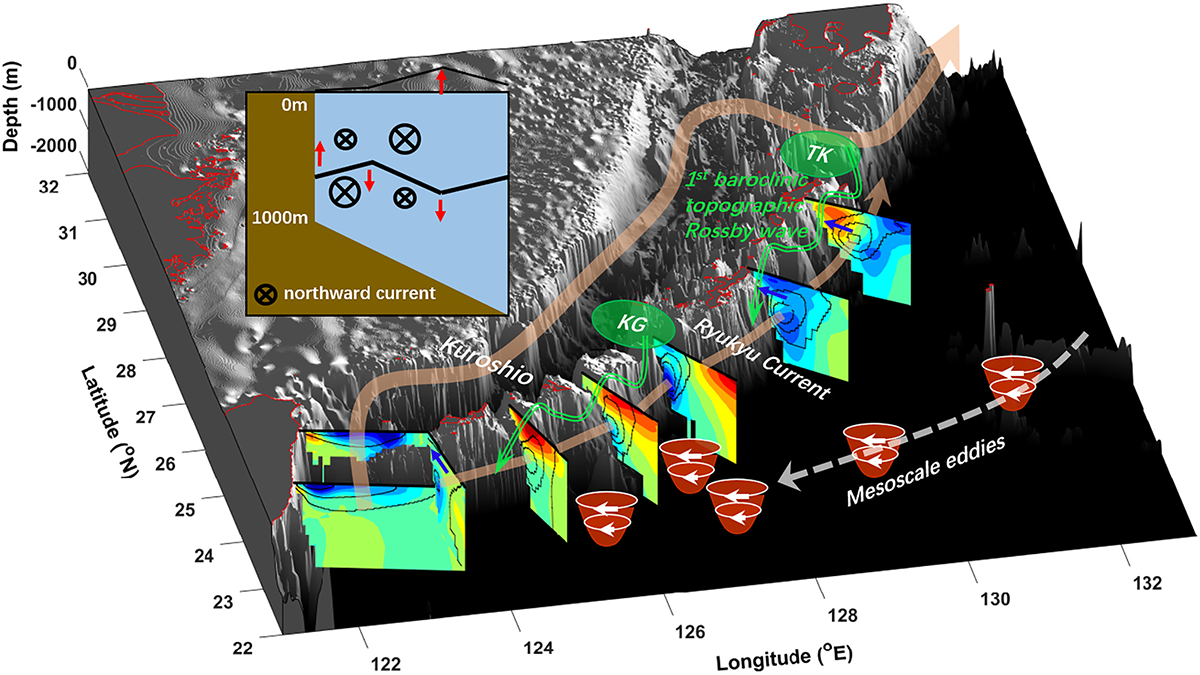Editors’ Highlights are summaries of recent papers by AGU’s journal editors.
Source: Journal of Geophysical Research: Oceans
Many ocean currents are found to be strengthened by global warming. However, recent studies point out that there was a hiatus in warming that is considered have slowed down the Kuroshio in the East China Sea.
The Ryukyu Current is a unique western boundary current of the North Pacific accompanied by the subsurface velocity maxima, which flows northeastward off the eastern coast of Ryukyu Island chain and merges into the Kuroshio, south of the Japanese island of Kyushu.
Using ocean reanalysis data, Liu et al. [2022] found that the Ryukyu Current also slowed down during a 1993-2018 global warming hiatus. Their results also suggest that signals of the weakened Kuroshio in the Tokara Strait and that of the Kerama Gap overflow propagate southward along the eastern coast of Ryukyu Island chain as topographic Rossby waves, leading to the shoaling of density layers on the shore side. Further, the increased number of westward traveling anticyclonic eddies propagating into the regions uplifted density layers on the offshore side. These combined effects are found to be responsible for the weakening of the Ryukyu Current.
Citation: Liu, Z.-J., Zhu, X.-H., Nakamura, H., Wang, M., Nishina, A., Qiao, Y.-X., & Zhu, Z.-N. (2022). Response of the Ryukyu Current to climate change during 1993–2018: Is there a robust trend? Journal of Geophysical Research: Oceans, 127, e2022JC018957. https://doi.org/10.1029/2022JC018957
—Takeyoshi Nagai, Editor, JGR: Oceans

